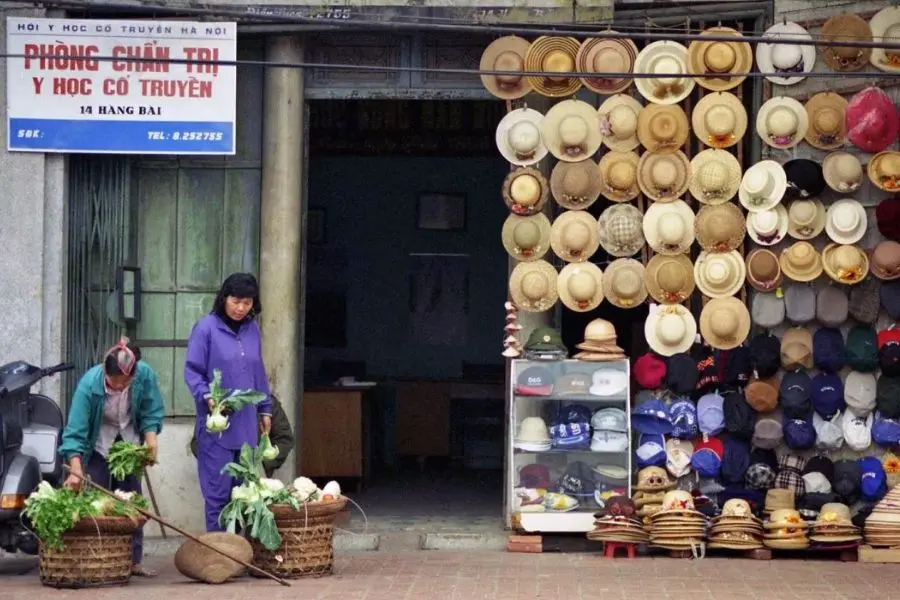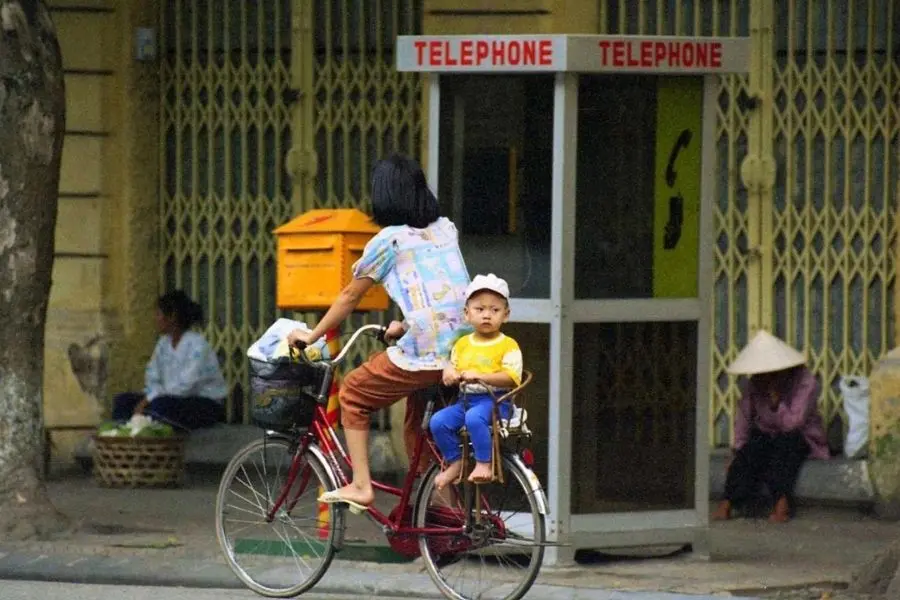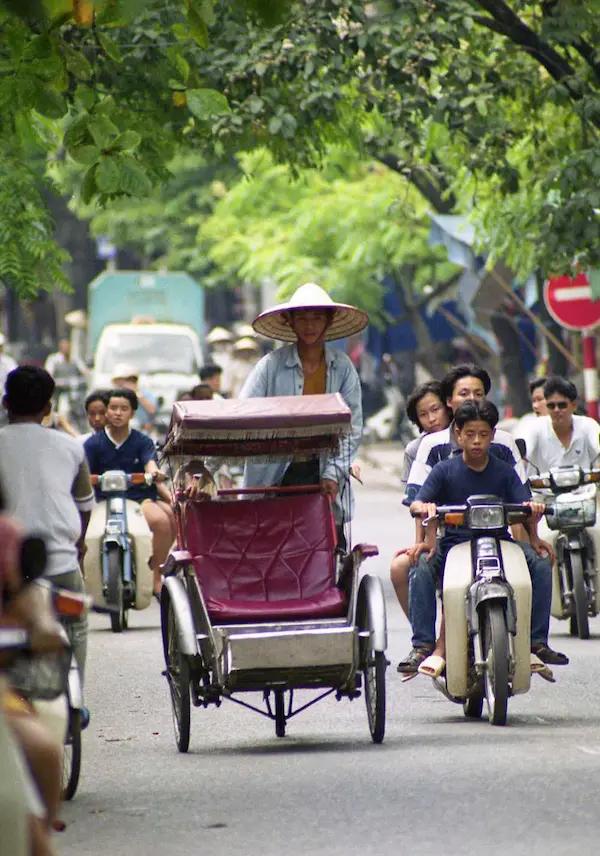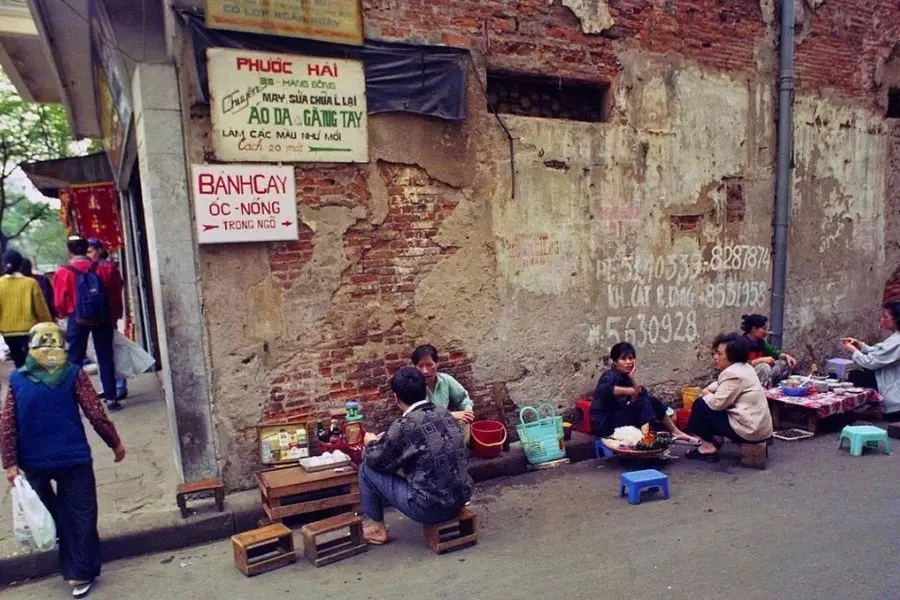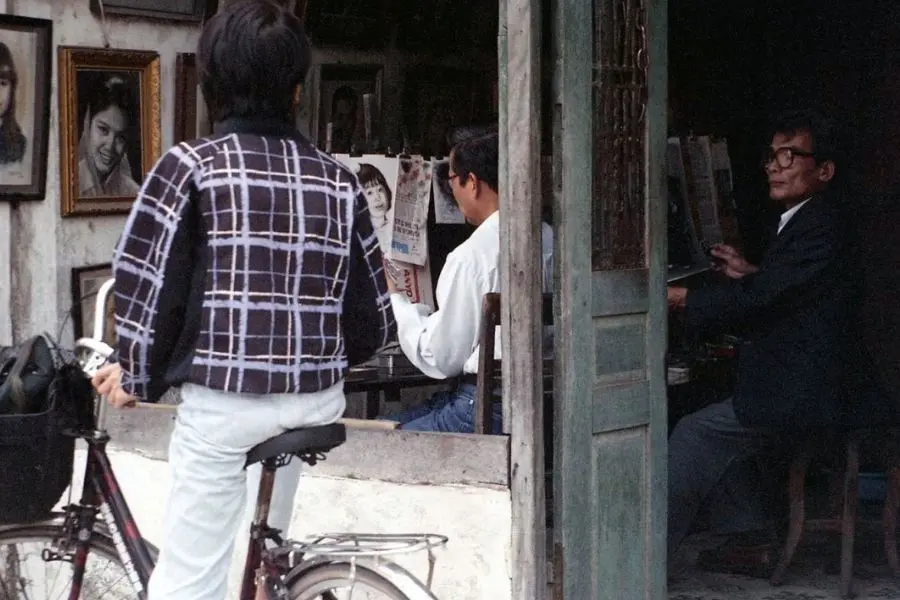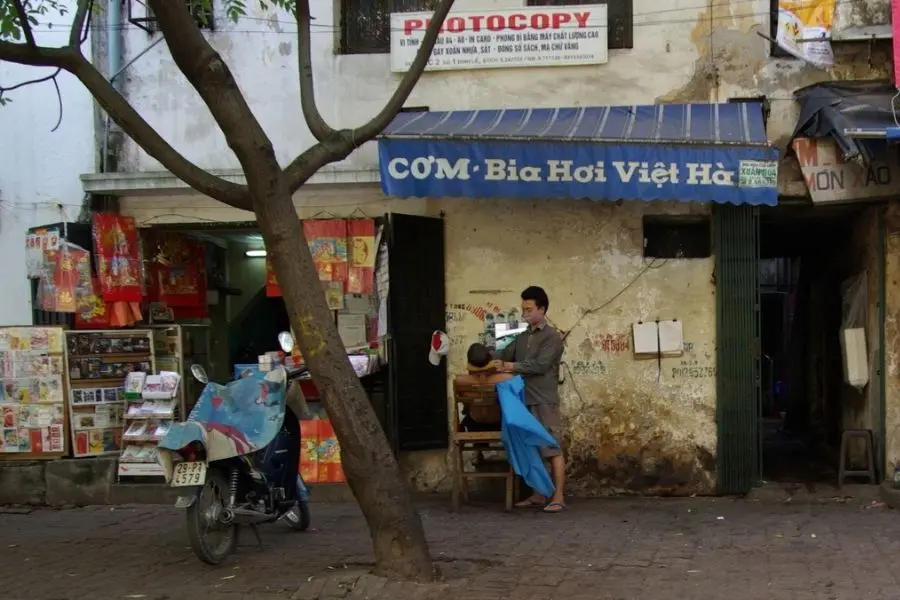When Japanese photographer Yuichi Kobayashi first arrived in Hanoi in 1995, he wasn’t chasing tourist attractions or Instagram-worthy backdrops. He carried a camera and a quiet fascination for daily life. What he found was a capital city unlike any other in Asia – still sleepy, still unpolished, and still raw with charm. His photographs have since become a rare time capsule showing what Old Hanoi looked like in 1990s.
Hanoi Before the Crowds
Today, Hanoi is buzzing with scooters, cafés, boutique hotels, and guided tours. But in the mid-1990s, tourism was almost nonexistent. Direct flights to Noi Bai were limited, foreigners were rare, and the Old Quarter felt more like a small town than the beating heart of a nation’s capital.
In Kobayashi’s early photos, you don’t see neon signs or modern storefronts. Instead, you see quiet streets lined with colonial façades, women balancing baskets on bamboo poles, and children playing beside bicycles. If you’ve ever wondered what Old Hanoi looked like in 1990s, his images tell a story of simplicity and resilience.
The moment of a mother riding her bicycle down Trang Tien Street captured the photographer’s lens in 1998. Behind her stood a public phone booth that has now completely disappeared. Mr. Yuichi recalled that, at the time, people had to buy phone cards at the post office to make a call.
The Rhythm of Daily Life
One of his favorite subjects was the cyclo driver. In 1999, he captured a man leaning casually against his three-wheeled carriage on Hàng Trống Street. To him, the posture looked “cool,” but the photo also documented a way of life that was beginning to fade. In those days, cyclos weren’t just tourist novelties – they were the city’s version of taxis.
He also photographed vendors along Hàng Bông, where people gathered at sidewalk stalls for tea, cigarettes, or a quick snack. In the background: old French-style houses with peeling paint, their shutters cracked open to let in the afternoon light. These everyday details – phone booths, handwritten shop signs, children in school uniforms – form the essence of what Old Hanoi looked like in 1990s.
A Photographer’s Connection
Kobayashi didn’t just observe; he connected. He often returned to the same streets at different times of day, chasing changes in light, sound, and energy. He recalls freezing winter evenings on Tràng Tiền Street when people queued for ice cream despite the cold. He remembers artists painting portraits near Hoàn Kiếm Lake, wearing suits as if heading to an office job.
These moments weren’t staged. They were fragments of a city still rooted in traditions, before modernization reshaped its skyline. That’s why his collection resonates: it’s an honest portrait of what Old Hanoi looked like in 1990s, not a polished travel brochure.
The Transformation Begins
By the early 2000s, the city began to change. Chợ Hàng Da, once known for handicrafts, appeared in Japanese travel guidebooks. Souvenir shops opened along Hàng Gai. Bus routes expanded, and infrastructure slowly improved. Kobayashi returned years later and found some streets barely recognizable.
Yet, amid the change, he was surprised at what hadn’t disappeared. Certain shopfronts still stood in the same places, selling the same goods. Old trees along boulevards kept their familiar shade. And tucked away in the backstreets, families still cooked outdoors, repaired bicycles, and brewed tea the same way they did in the 1990s. For him, this mix of continuity and transformation defined what Old Hanoi looked like in 1990s compared to now.
Why It Matters for Travelers Today
For international visitors, Kobayashi’s story is more than nostalgia – it’s an invitation. It’s easy to get caught up in “top 10 attractions” lists, but to really understand Hanoi, you need to see it as he did: through the everyday details.
Take an early morning walk around Hoàn Kiếm Lake. Watch as street vendors prepare steaming pots of pho, cyclists weave through narrow alleys, and the city awakens. Or wander the Old Quarter without a map, letting yourself stumble upon hidden courtyards, ancestral houses, or crumbling French balconies. These experiences echo what Old Hanoi looked like in 1990s, even if the pace of life is faster now.
Hidden Corners That Still Whisper the Past
Long Bien Bridge – Walk across at sunrise for the same view farmers and cyclists once had when they carried produce into the city.
Side alleys of Hàng Bạc and Hàng Đào – Behind souvenir shops, you’ll still find families cooking on charcoal stoves.
Street barbers near Đinh Lễ – In the 1990s, these were everywhere. Today, a few still survive, trimming hair under the shade of banyan trees.
Tràng Tiền Ice Cream – Queues still form here, a living link between past and present.
Exploring these spots lets you piece together what Old Hanoi looked like in 1990s while enjoying its modern comforts.
Balancing Memory and Modernity
Hanoi is transforming fast. The iconic “Shark Jaw” building near Hoàn Kiếm has been demolished, squares have been opened, and glass towers rise where gardens once stood. For locals, progress is necessary. But for travelers, the challenge is to find the memories still embedded in the city’s bones.
Kobayashi often reflects on this tension. To him, Hanoi’s soul lies not in monuments but in people – their gestures, their routines, their laughter in narrow lanes. That’s why his archive matters. It shows us what Old Hanoi looked like in 1990s, reminding both locals and visitors why preservation matters as much as growth.
Experience It for Yourself
If you’re planning a trip, don’t just rush through Hanoi on your way to Ha Long Bay or Sapa. Stay in a heritage guesthouse in the Old Quarter. Hire a cyclo, not just for the ride but for the conversation with the driver. Visit small pagodas at dawn. Taste street food that has been served on the same corner for generations.
This is how you step into Kobayashi’s shoes, how you glimpse what Old Hanoi looked like in 1990s, and how you make your own story of the city – one that connects past and present.
Yuichi Kobayashi didn’t come to Hanoi as a tourist; he came as a witness. His photos prove that cities are not just collections of buildings but living organisms of memory, sound, and scent. For today’s traveler, the question isn’t just what Old Hanoi looked like in 1990s – it’s how much of that spirit you can still find if you slow down, wander, and look closely. If you find this article interesting, follow Vietnam Local Tour Operators for more information and news about Vietnam!

